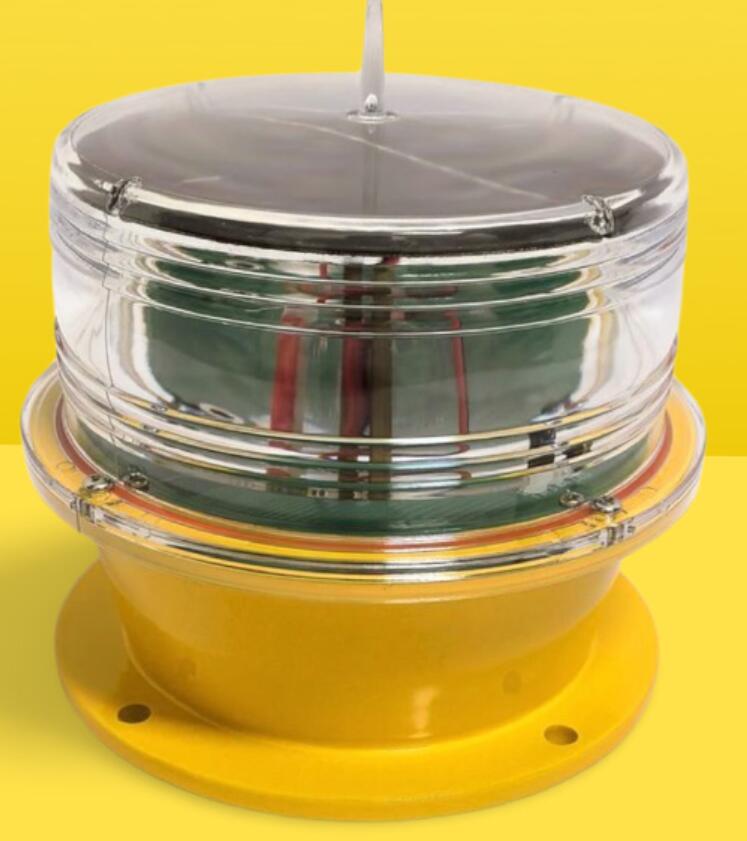Solar Aircraft Warning Lights: The Future of Eco-Friendly Aviation Safety
In an era of growing environmental awareness and energy efficiency demands, solar aircraft warning lights have emerged as a sustainable solution for aviation obstruction lighting. These self-sufficient systems combine renewable solar power with advanced LED technology to mark tall structures while eliminating grid dependency. As industries worldwide shift toward greener alternatives, solar-powered warning lights are becoming the preferred choice for towers, wind farms, and remote infrastructure. This article examines their benefits, working principles, applications, and technological advancements in modern aviation safety.
The Need for Solar-Powered Warning Systems
Traditional obstruction lighting relies on grid electricity or frequent battery replacements, posing challenges for:
Remote locations (offshore wind turbines, mountain communication towers)
Areas with unreliable power supply (developing regions, rural installations)
Environmentally sensitive zones (national parks, marine environments)
Solar aircraft warning lights solve these issues by harnessing sunlight, making them ideal for sustainable aviation safety solutions.

How Solar Aircraft Warning Lights Work
The system comprises three key components:
High-Efficiency Solar Panels
Monocrystalline silicon cells (20-24% efficiency)
Weather-resistant coatings for long-term durability
Intelligent Charge Controller
Prevents overcharging/deep discharge
Maximizes battery lifespan (typically 5-7 years)
| solar aircraft warning light |
LED Lighting Unit
Ultra-bright aviation-grade LEDs
Multiple flash patterns (ICAO/FAA compliant)
50,000+ hour lifespan
The system operates autonomously, charging during daylight and illuminating at night or in low visibility conditions.
Key Advantages Over Conventional Systems
1. Complete Energy Independence
No electrical infrastructure required
| solar aircraft warning lights |
Operational in off-grid locations worldwide
Eliminates costly trenching and cabling
2. Reduced Operational Costs
Zero electricity bills
Minimal maintenance (no bulb replacements)
Long-term reliability lowers total cost of ownership
3. Environmental Benefits
Carbon-neutral operation
No hazardous materials (mercury-free)
Silent operation preserves natural soundscapes
4. Enhanced Reliability
Built-in battery backup (3-5 nights autonomy)
Wide temperature tolerance (-30°C to +60°C)
Corrosion-resistant marine-grade materials
Technical Specifications and Compliance
Modern solar aircraft warning lights meet stringent aviation standards:
Intensity Options:
Low (L-810): <45m structures
Medium (L-864/865): 45-150m
High (L-856/857): >150m
Regulatory Compliance:
ICAO Annex 14
FAA AC 70/7460-1K
EN 61820 (Europe)
CASA (Australia)
Durability Features:
IP66/67 waterproof rating
25-year solar panel warranty
Lightning protection
Innovations in Solar Warning Light Technology
1. Adaptive Brightness Control
Automatic intensity adjustment based on:
Ambient light conditions
Battery charge level
Visibility requirements
2. Wireless Monitoring Systems
Remote performance tracking via:
GSM networks
Satellite communication
IoT platforms
3. Hybrid Power Options
Wind-solar hybrid systems for:
High-latitude locations
Extended bad weather periods
4. Modular Designs
Scalable systems for:
Temporary installations
Height-adjustable towers
Rapid deployment scenarios
Applications Across Industries
1. Wind Energy Sector
Offshore/onshore turbine marking
Complies with IEC 61400-24
Reduces maintenance boat trips
2. Telecommunications
Cell tower obstruction lighting
Mountain-top repeater stations
5G infrastructure marking
3. Urban Infrastructure
High-rise building compliance
Bridge and crane lighting
Smart city integration
4. Aviation Infrastructure
Airport perimeter lighting
Approach path obstacles
Helipad identification
Future Trends and Developments
AI-Optimized Power Management
Predictive weather adaptation
Traffic-based intensity adjustment
Advanced Energy Storage
Graphene batteries
Supercapacitor technology
Drone-Compatible Lighting
Low-altitude visibility enhancement
UAV traffic management integration
Self-Cleaning Systems
Automated panel cleaning
Ice-melting capabilities
Installation Considerations
When deploying solar aircraft warning lights, key factors include:
Solar insolation at location
Obstruction height and profile
Local wildlife considerations
Anti-collision requirements
Maintenance accessibility
Proper site surveys ensure optimal performance and regulatory compliance.
Solar aircraft warning lights represent a perfect synergy between aviation safety and sustainable technology. By eliminating grid dependency while maintaining (or exceeding) traditional lighting performance, these systems are revolutionizing obstruction marking across industries. Their cost-effectiveness, reliability, and environmental benefits make them particularly valuable for remote and challenging installations.
As solar technology continues advancing alongside aviation needs, future systems will become even more intelligent, efficient, and integrated with broader air traffic management networks. For any structure requiring reliable, eco-friendly obstruction lighting, solar-powered warning lights offer the most forward-thinking solution - keeping skies safe today while protecting the environment for tomorrow.
